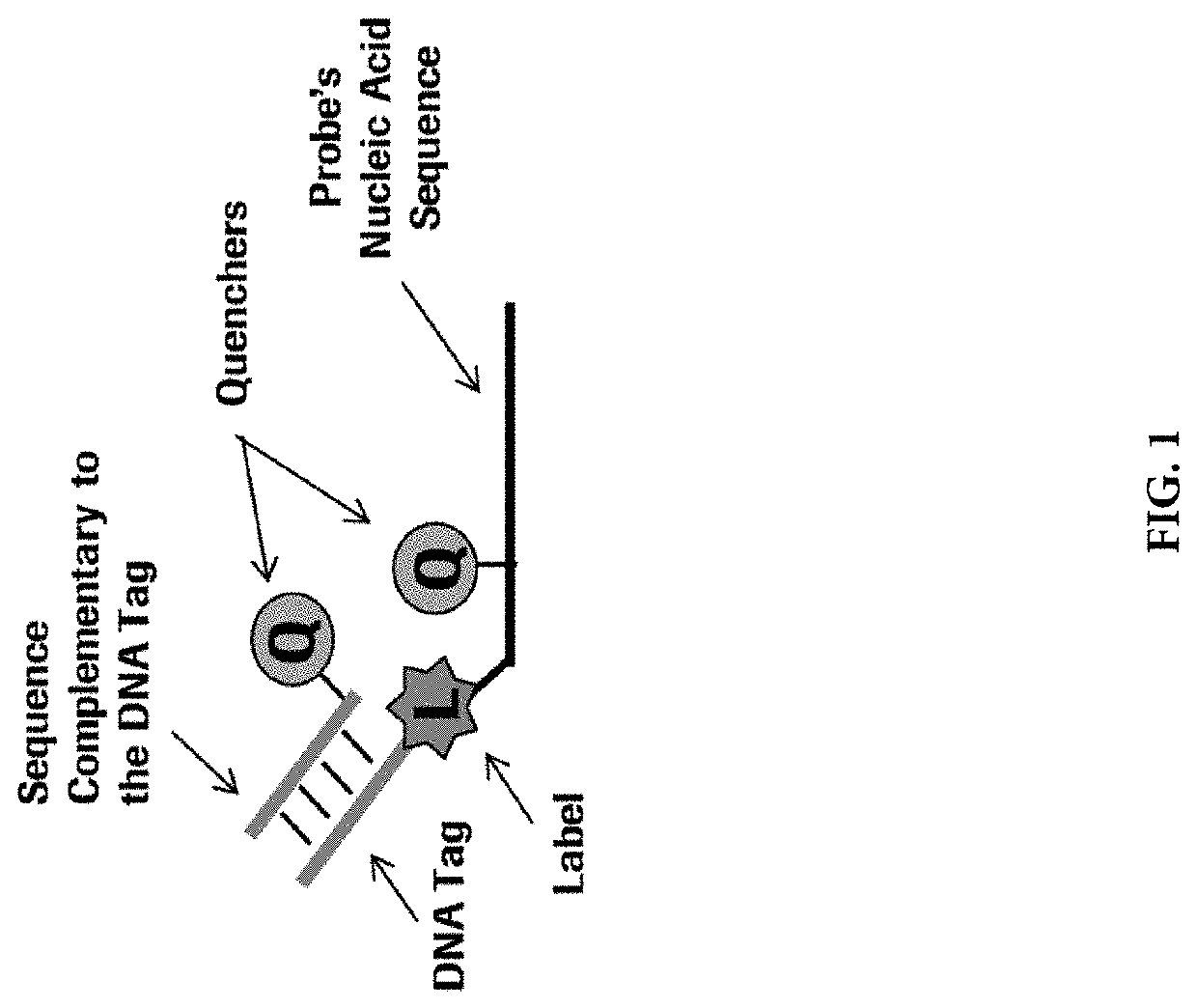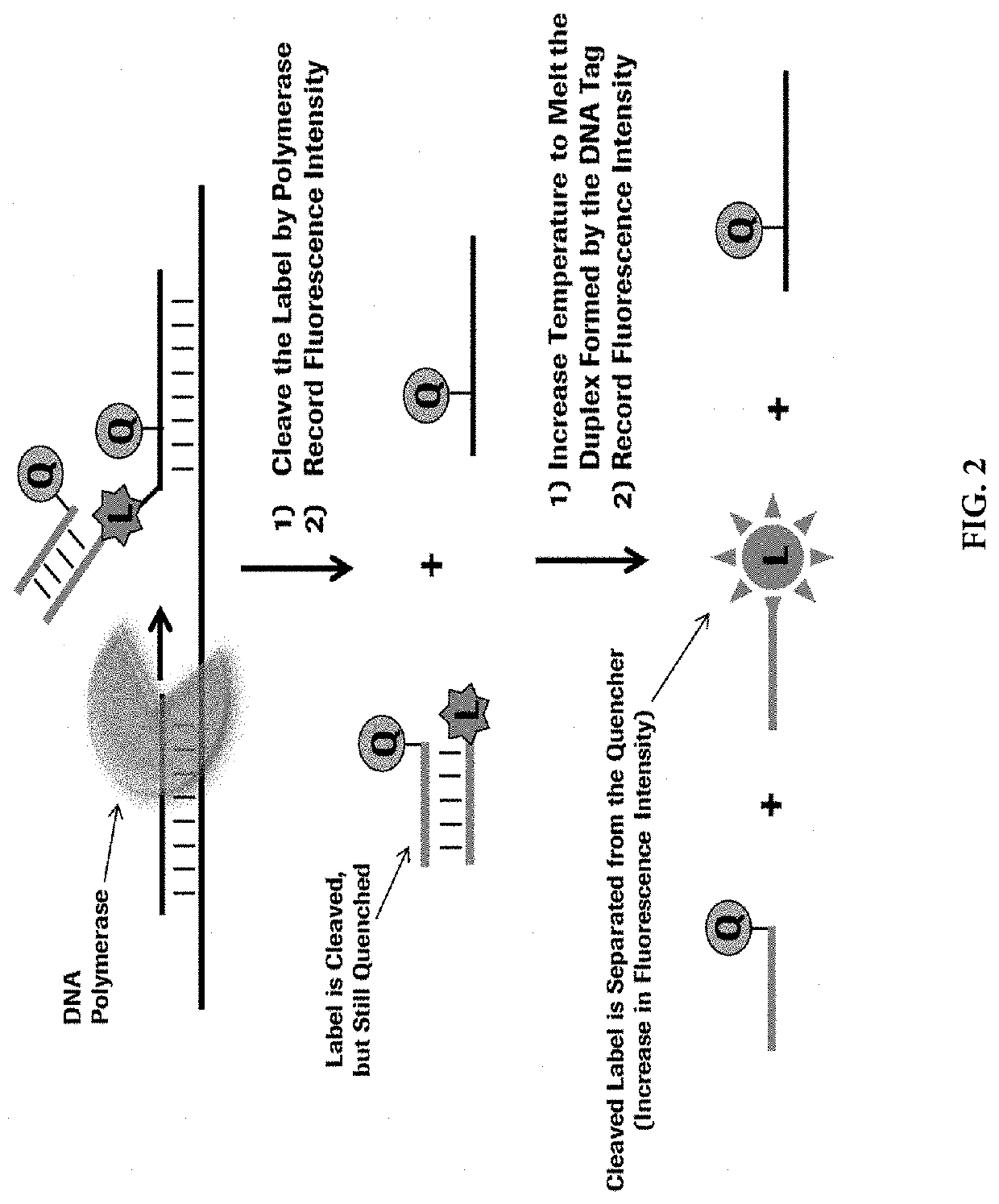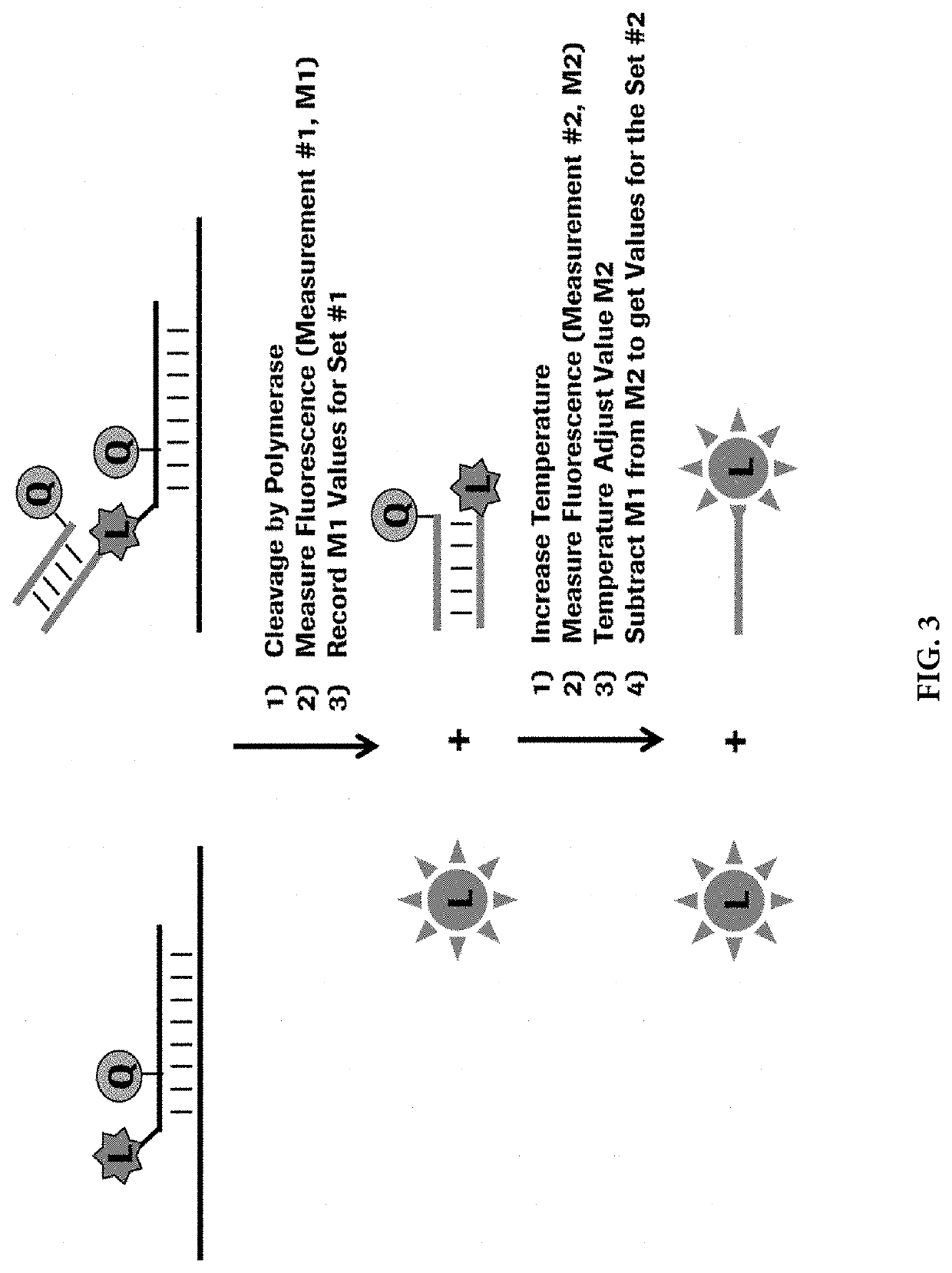Methods for performing multiplexed real-time PCR
a real-time pcr and multiplexing technology, applied in the field of pcr, can solve the problems of limited detection instruments, the ability to multiplex an assay, and the inability to detect more than four to seven separate wavelengths, and achieve the effect of higher melting temperature valu
- Summary
- Abstract
- Description
- Claims
- Application Information
AI Technical Summary
Benefits of technology
Problems solved by technology
Method used
Image
Examples
example 1 verification
of Quenching by the Quenching Oligonucleotide
[0089]An experiment was performed to verify that a quenching oligonucleotide containing a quencher moiety would be able to hybridize with the fluorescently-labeled tag portion of an oligonucleotide probe and quench the fluorescent signal at a temperature below the melting temperature of the duplex but not at a temperature above the melting temperature in which the duplex has been dissociated. Table 1 contains the nucleotide sequences of the tag portion and the quenching oligonucleotide. Quenching oligonucleotide Q0 does not contain the quencher whereas quenching oligonucleotide Q1 contains a BHQ-2 quencher at its 5′ terminus.
[0090]
TABLE 1SEQIDNameSequenceModificationsNO:9FAM9TAGCGTCGCCAGTCAGCTCCGG9F9T9 = C9 spacer,1F = FAMQ0CCGGAGCTGACTGGCGACGpp = phosphate2Q1QCCGGAGCTGACTGGCGACGpp = phosphate,Q = BHQ-23
[0091]The 9FAM9 TAG oligonucleotide was incubated without a quenching oligonucleotide (QX) or with the Q0 or Q1 quenching oligonucleotide...
example 2
Real-Time PCR With Tagged Probe and Quenching Oligonucleotide
[0094]A Real-time PCR study was conducted using samples that contained various concentrations of an internal control template (GIC) mixed with various concentrations of a template sequence from HIV-1 Group M (HIM). A standard TaqMan® hydrolysis probe (G0) that hybridizes to the GIC sequence and a tagged probe (L24) with a complementary quenching oligonucleotide (Q9) and an annealing portion that hybridizes to the HIM sequence were used to detect the amplification products generated from these two templates. Both probes were labeled with FAM and Table 3 shows their sequences and the sequence of the quenching oligonucleotide.
[0095]
TABLE 3SEQ IDNameSequenceModificationsNO:G0FTGCGCGTCCCGQTTTTGATACTTCGTAACGGTGF = FAM, Q = BHQ-2, p =4CpphosphateL24QTCTCTAGCAGTGGCGCCCGAACAGGGACFCACF = FAM, Q = BHQ-2, p =5ACATTGGCACCGCCGTCTpphosphate, tag underlinedQ9AGACGGCGGTGCCAATGTGTGQpQ = BHQ-2, p = phosphate6
[0096]Four concentrations of GIC:...
example 3
PCR With Probes Having Different Fluorescent Dyes
[0100]A series of experiments were performed as described in Example 2 except that the G0 and L24 probes were labeled with FAM dye in the first set, with HEX dye in the second set, with JA270 dye in the third set and with Cy5.5 dye in the fourth set. In each set of experiments, PCR amplification was performed with only GIC template present at 100 cp / r×n, only HIV template present at 1000 cp / r×n or with both GIC (100 cp / r×n) and HIV (1000 cp / r×n) templates present. The results of the experiment are shown in FIG. 10. In fluorescence readings at 58° C. (FIG. 10, 1st column), only signals generated by the G0 probes for the GIC templates were observed, as expected, since the L24 probes were still hybridized to the Q9 quenching oligonucleotides. In fluorescence readings at 80° C. (FIG. 10, 2nd column), signals generated by both the G0 probes (for GIC) and the “unquenched” L24 probes for HIV) were observed. After using a normalized coefficie...
PUM
| Property | Measurement | Unit |
|---|---|---|
| temperature | aaaaa | aaaaa |
| fluorescent | aaaaa | aaaaa |
| nucleic acid | aaaaa | aaaaa |
Abstract
Description
Claims
Application Information
 Login to View More
Login to View More - R&D
- Intellectual Property
- Life Sciences
- Materials
- Tech Scout
- Unparalleled Data Quality
- Higher Quality Content
- 60% Fewer Hallucinations
Browse by: Latest US Patents, China's latest patents, Technical Efficacy Thesaurus, Application Domain, Technology Topic, Popular Technical Reports.
© 2025 PatSnap. All rights reserved.Legal|Privacy policy|Modern Slavery Act Transparency Statement|Sitemap|About US| Contact US: help@patsnap.com



